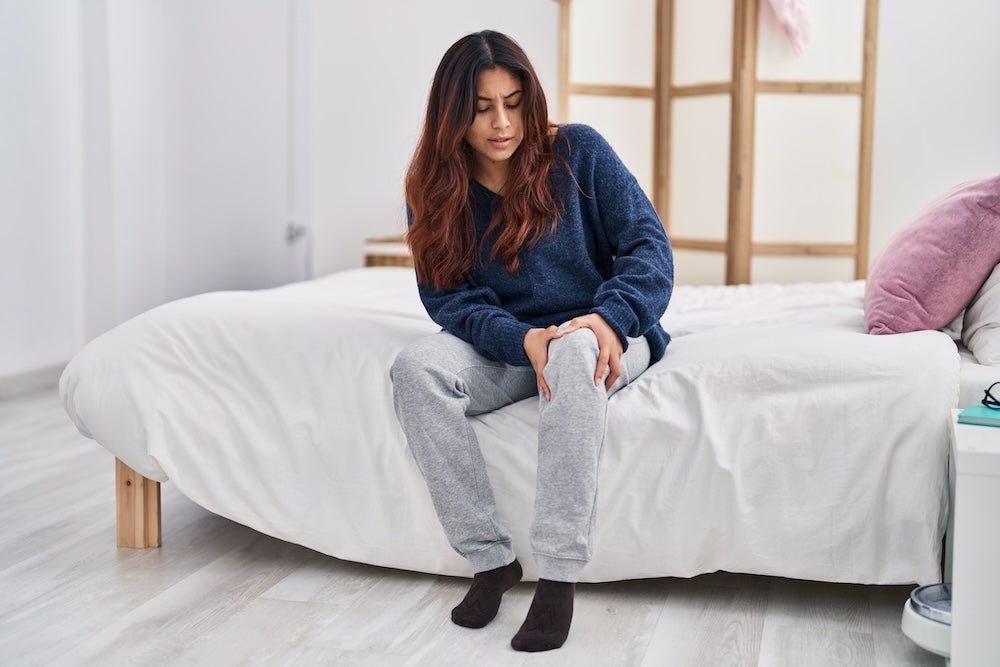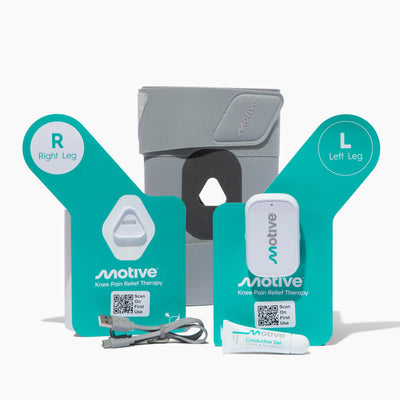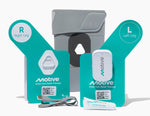
Knee pain is one of the problems that is observed in people of all age groups. It can result from either knee injury (such as torn cartilage or torn meniscus) or medical conditions such as osteoarthritis and rheumatoid arthritis. In young people, it’s often due to sports injuries.
Additionally, as people age, daily activities, such as walking, bending, lifting, and standing also cause wear and tear of knee joints that result in knee pain. Furthermore, being overweight or overusing the knee can also result in severe knee pain. One common knee condition that is most commonly observed in people over the age of 55 is knee osteoarthritis. The prevalence of the disease increases with age.
Whatever the reason, aging or knee injury, knee problems can affect a range of motions, making it difficult to perform regular chores and affect quality of life.
A range of treatments are available to treat different types of knee pain, such as physical therapy, anti-inflammatory medications (such as ibuprofen), or surgeries (such as knee arthroplasty). However, many people still experience long-term pain after discontinuing the medication or treatment.
So, what else can you do to get relief from knee pain?
It’s an FDA-cleared knee pain therapy that uses a proprietary form of NMES (Neuromuscular Electrical Stimulation) to treat one of the primary causes of knee pain, which is muscle weakness. Electric currents boost blood circulation and trigger muscle fibers to contract and move, effectively strengthening the muscles—a similar effect to that of physical exercise.
In this article, we will review the causes of knee pain, treatment options for each condition, and how Motive is a proven solution or a long-lasting knee pain relief.
Uncovering the Causes of Knee Joint Pain
The knee is composed of the following bone types:
- Shinbone top (Tibia)
- Thighbone bottom (Femur)
- Kneecap (Patella)
The bones are held together by strong ligaments and tendons, with cushioning and stability provided by the knee cartilage (which acts as a shock absorber) beneath the kneecap. The ligaments of the knee are:
- The anterior cruciate ligament (ACL)
- The posterior cruciate ligament (PCL)
- The medial collateral ligament (MCL)
- The lateral collateral ligament (LCL)
They are involved in carrying out different types of motions (front, back, and rotation) and provide stability to joints. Similarly, the tendons in the knee (such as quadriceps and patellar tendons) help in straightening and extending your leg.
Any problem in the bones or muscles of the knee leads to knee pain. Even significant stress during daily activities like lifting and kneeling can lead to severe knee problems.
Some common causes of knee pain include:
- Aging
- Knee injury (tears and dislocation)
- Repeated or overuse of knee joints
- Patellofemoral pain syndrome
- Ligament tear and sprain
- Prepatellar bursitis
- Patellar tendonitis and tear
- Iliotibial band syndrome
- Baker’s cyst
Any of the above knee pain conditions not only affect your routine activities but also affect you emotionally because of the inability to perform any task with ease. Therefore, it’s always recommended to consult a healthcare specialist or a doctor if you experience knee pain.
Recognizing and addressing knee pain at an early stage may bring you relief and allow you to return to your regular routine before things get worse.
The Role of Muscle Strength in Knee Pain Relief
The treatment of knee pain requires a thorough understanding of the cause of the pain. It begins by diagnosing the condition through physical examination or using imaging techniques (such as X-ray or MRI). This is commonly followed by medications, surgeries (such as arthroscopy and total knee replacement), acupuncture, or stem cell injections based on the type and cause of the knee pain condition.
Strengthening muscles around the knee helps you achieve mobility and comfort from knee pain. It can either be done through exercise or using medical devices such as Motive therapy.
Though it may be tempting to not exercise when you experience knee pain, certain exercises, such as hamstring curls and leg lifts, can help you strengthen your muscles and regain knee mobility. A physical therapist should be consulted for the type of exercise that can be performed under these conditions.
Exercising is not suitable for all conditions, such as knee arthritis or inflammatory knees. Further, it can even worsen knee conditions if not done properly.
This is where Motive differentiates from other therapy options by offering a drug-free treatment that can be used to treat any level of knee pain and addresses one of the primary causes of knee pain: muscle weakness.
It’s FDA-cleared and recommended by physicians to treat any knee pain, especially after surgery or any type of arthritis (such as osteoarthritis or rheumatoid arthritis).
The Motive Difference
While there are several knee pain treatment options available in the market, most of these devices and medications offer short-term relief. Unfortunately, once you discontinue these treatments, there's a high likelihood of the problem resurfacing.
This results in a frustrating cycle of temporary relief followed by recurring discomfort. Motive therapy breaks this cycle by providing a solution that provides lasting relief.
Motive is a groundbreaking pain relief device that uses proprietary NMES (Neuromuscular Electrical Stimulation) to strengthen the major muscle groups surrounding your knee joint. Through targeted stimulation, it induces muscle contractions that strengthen thigh muscles, alleviating strain on the knee joint and offering support during various functional activities.
Motive is the sole FDA-cleared treatment designed to target an underlying cause of knee pain.
One study found that patients who used this therapy saw an initial 30% reduction in knee pain after just one month. With the continuation of the therapy over the following weeks, the average pain relief skyrocketed to an impressive 65%*, highlighting the consistent and remarkable effectiveness of Motive therapy in alleviating knee pain.
By choosing Motive, you're opting for a long-lasting solution that not only alleviates pain but also enhances your overall quality of life.
Accessible Relief Tailored to Your Needs
Motive is a device designed by healthcare specialists to treat knee pain in the comfort of your home. It’s an over-the-counter (DOES NOT require any prescriptions) and easy-to-use therapy to treat your knee conditions and track its progress over time.
The accessibility of this therapy empowers you to proactively address and manage your joint pain-related issues right away!
The device can easily be operated through the MyMotive App, which needs to be installed on your phone after you purchase the device. Through the app, you can control the stimulation level, break our therapy into sessions, and receive a progress chart for your knee conditions.
Over time, the app monitors various aspects, including your pain level, therapy duration, and therapy intensity—each feature added to improve your knee pain treatment experience and get better insight into your progress.
Experience Motive
Knee pain is one of the most common knee problems affecting older or younger people. It results from any of the underlying causes, such as knee injuries, osteoarthritis, rheumatoid arthritis, or overuse of the knee in daily activities or sports. The conditions can lead to severe pain, swelling, and stiffness in knee joints, making it challenging for the affected people to live their normal lives.
Motive offers an effective approach to treating knee pain by strengthening your thigh muscles.
Unlike temporary treatments, Motive doesn't simply mask your knee pain; it actively addresses it, facilitating the restoration of mobility, enhanced function, and a return to your active lifestyle.
The FDA-cleared therapy is a preferred treatment for knee pain among doctors and has benefited thousands of patients in managing knee pain and enhancing mobility. So, if you’re looking for an effective and easy solution for your knee pain, get your hands on Motive NOW!
Learn more about Motive therapy, its impact, and how you can get pain relief here!





